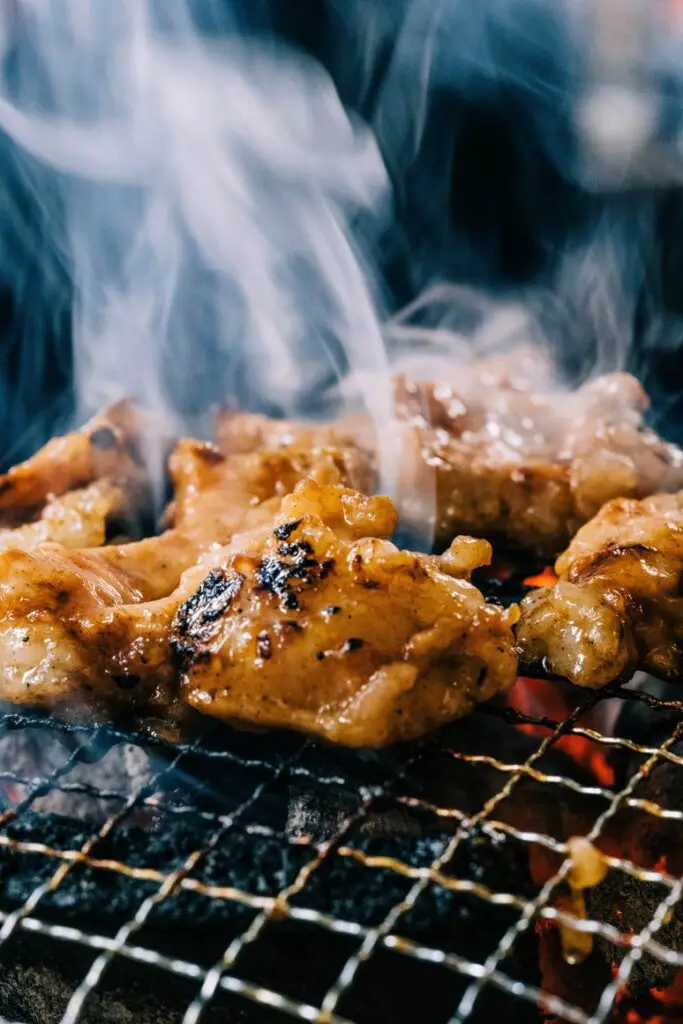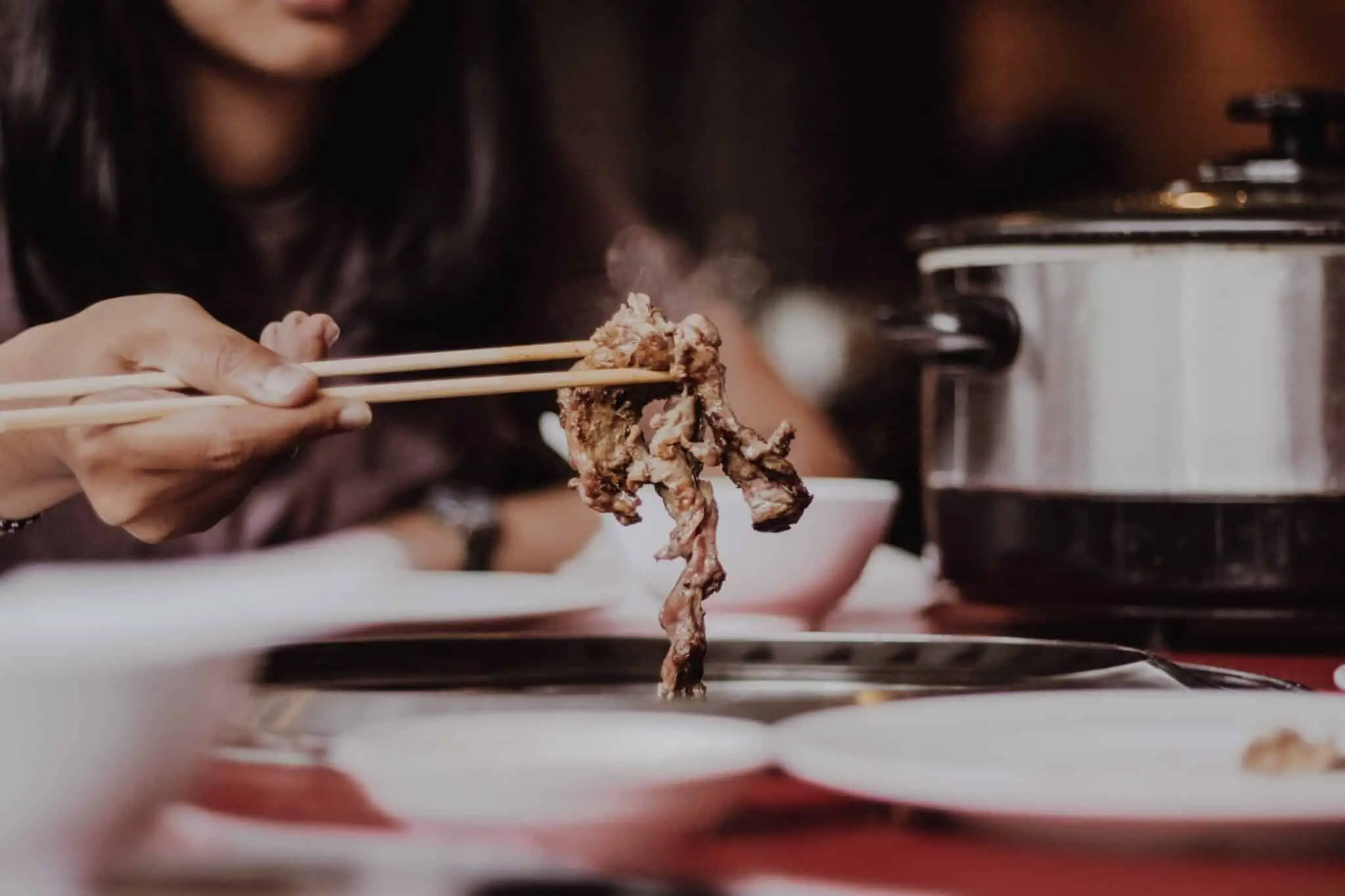Table of Contents
Whether you’re looking for beef, chicken, seafood, or pork – Yakiniku has got you covered. Not to be confused with Korea BBQ (although they share some similarities we’ll discuss later), this comparably modern cuisine is popular in Japan and is entirely comprised of grilled meats and fish that the foodies will cook themselves at the table. The restaurants serving this type of experience trust the diners to cook their own meals and simply provide the raw meats for them to enjoy.
First finding its footing in the 1800s, the term Yakiniku was born out of political correctness around the proper differentiation between North Korean and South Korean BBQ styles. It quickly became a staple in Japan where the majority of protein and meats consumed are done so in small, bite-sized pieces alongside other meal components such as rice and various noodle varieties.
What Makes Yakiniku So Special?
The bite-sized pieces offered on the menu ensure that otherwise tough and undesirable cuts of meat are much easier to eat and don’t require so much attention to tenderise. Plus, no one wants to wait 12-15 minutes for their steak to cook at the table, so small rapid-cooking food is certainly preferred.

The meats you will often find at the table of a typical party ranges from prime cuts and tender steaks all the way to hearts, liver and other offal such as intestines and stomachs. And if you are wondering what marinades and seasonings you can find adorning your favourite cut of beef or pork, you’ll be left wondering for a while as the large majority (almost all really) of the meat served at a Yakiniku restaurant arrives entirely devoid of all added flavours. Instead, just like a lot of other Japanese dishes, it is preferable to dip your grilled meats into a variety of seasonings at the table – soy sauce is the most common, but others include:
- Miso based sauces and glazes
- Salt and Szechuan Pepper
- Citrus based sauces and juices
- Fish Sauces
Should You Find Your Local Restaurant?
Visiting one of these places is an excellent experience and one that I would recommend to anyone travelling to Japan or any other country that you can manage to divine the location of a Yakiniku bar in. I’m always on the lookout for new places to grill my meats so let me know if you find one!
But if you haven’t been, what should you expect? Well, you wouldn’t be too far off if you began to imagine a butcher’s shop with table service. The menus are full of raw meat options and each table is home to its very own grill for you to cook on. You can order dozens of different cuts of meat and they will simply bring you prepared and portioned plates and trays ready to cook. Also available, though not included like Korean BBQ, are sides – but I’d stick to the meat; you can get chow mein anywhere, but you can’t grill beef tongue at your local hangout.

Can you do Yakiniku at home?
Sure, you can! As long as you have an open fire and a selection of meats you can recreate your very own Yakiniku experience from the comfort of your own home. Plus, you have the freedom to marinate meats just like you would for your favourite weeknight protein meal. If you want to make a spectacle of it, I suggest preparing a few different cuts of meat and plating them alongside a selection of dipping sauces and placing it all next to a tabletop grill for guests to enjoy at their leisure.
Depending on your palate, it can even be an impressively cheap yet satisfying meal as you choose lower-cost cuts that benefit from the Yakiniku method. Not to mention the wonderful experience that you can share amongst as many friends as you have seats at your table.
Can you use Wagyu in Yakiniku?
Of course, you can, but make sure that you pay attention to your guests. Wagyu beef by nature is incredibly expensive and considered a premium item – if your guests are not confident at cooking Yakiniku style then things can quickly turn from premium to less-than-yum. It is a good idea to reserve the expensive cuts of meat to be cooked by the designated chef or those that are confident that they will not accidentally overcook such a luxurious piece of food.

Once you get over the difficulty curve, wagyu beef is one of the best foods to serve as its rich fatty composition produces the perfect fat to cook other meats in; if you are especially thoughtful, you can disperse your fatty meats in between your leaner proteins and share the flavours.
It’s Not All Meats Down Here
Traditionally, meat is the only thing grilled in a Yakiniku environment, but that hasn’t stopped aspiring home cooks and chefs from experimenting with other ingredients that lend themselves particularly well to the flash-grilling process. Vegetables such as mushrooms and bell peppers are such fast-cooking and flavourful additions that it was only a matter of time before they made their way onto the metal grill of a Yakiniku party. But veering closer to the namesake meat products, cheeses such as Halloumi have also proven to be excellent when grilled and slightly charred alongside the typical meats and fish you find at the table.
Just don’t ask for the Calamari, it’s all about the grill, not the fryer!










